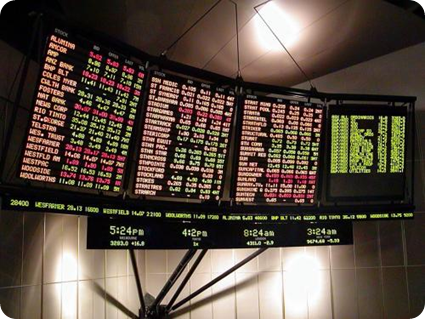Get Accurate Share Market Tips on Your Mobile Now for Amazing Profits - Call now at 09829714440
Trading in the stock market can be either very profitable of painfully unprofitable. Many professional traders can make a few hundred thousand dollars a year-depending on the competence of the traders. The trading of options hold a special attraction for many traders due to the leverage they provide because they usually trade at only a fraction of the price of the underlying stock. And options can significantly boost profits on winning stocks.
 Trading Options are considered by many to be a high-risk market activity so for that reason alone, unless one is well informed, it will pay to learn a little more about how to actually trade them. The general belief held by most professional traders is that the vast number of retail traders, lose money when they trade options. But that should not necessarily deter if effective strategies can be applied properly.
Trading Options are considered by many to be a high-risk market activity so for that reason alone, unless one is well informed, it will pay to learn a little more about how to actually trade them. The general belief held by most professional traders is that the vast number of retail traders, lose money when they trade options. But that should not necessarily deter if effective strategies can be applied properly.
Get Accurate Share Market Tips on Your Mobile Now for Amazing Profits - Call now at 09829714440
In reality, options were originally created to reduce risk by providing a method to acquire an asset of greater value at a fixed price within some specified time in the future without a commitment is being made to actually complete the acquisition by the specified time. In which case, the fee paid for the option is the only real cost involved in the transaction.
In the above explanation, the option is a derivative, meaning its existence is derived as a byproduct of the original asset, whether that is a stock or other type of asset. All forms of trading and speculating are accompanied by risk but in the case of trading options it is perhaps somewhat of an advantage for the option buyer to be able to set the maximum dollar amount that can be lost when a trade is made. That maximum amount at stake being the cost of the option, and that would only become a reality when the option expires.
When an option trade occurs, the transaction identifies:
• The name of the stock, usually called the underlying stock.
• The price at which the underlying stock will be bought or sold if the option holder chooses to exercise the option, this is called the “strike price”.
• The expiration date, the latest date that the option can be exercised.
The option can be exercised at any time up to and including that date but after that date it no longer exists. As mentioned above most options expire in this way. The unexpired time span is referred to as the term of the option.
Get Accurate Share Market Tips on Your Mobile Now for Amazing Profits - Call now at 09829714440
Recent Comments